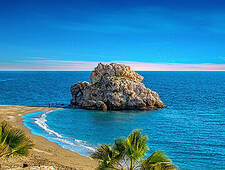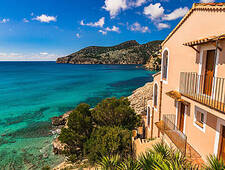Known for its Mediterranean climate and sunny days, it can be surprising to find out that Spain can get cold. While hot summers get you to search for cooling solutions in Spain, chilly weather also makes heating important. Many traditional Spanish houses emphasise natural airflow and shade rather than insulation and heat retention. At this stage, whether you’re buying property, renting, or already living in Spain, finding the perfect solutions for heating and cooling Spanish homes becomes important.
Understanding the Spanish Climate and Its Heating and Cooling Needs
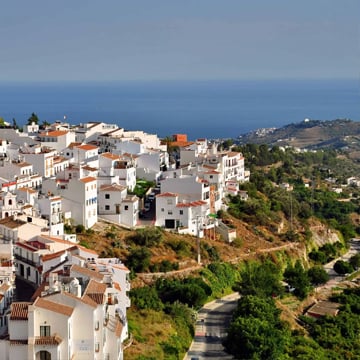 Spain’s climate is very varied due to its diverse landscapes, with large inland areas, mountains, a long coastline, and islands. So it’s not surprising why Spanish houses are cold in winter in northern and central areas, where the season can be harsher. On the other hand, with global climate change, summers are now hotter than ever before. While Spanish homes are generally built for hot weather, additional solutions can make summers better.
Spain’s climate is very varied due to its diverse landscapes, with large inland areas, mountains, a long coastline, and islands. So it’s not surprising why Spanish houses are cold in winter in northern and central areas, where the season can be harsher. On the other hand, with global climate change, summers are now hotter than ever before. While Spanish homes are generally built for hot weather, additional solutions can make summers better.
Unlike warm seasons, winter solutions like central heating are not common in many of these properties. Many Mediterranean and Andalusian building designs prioritize staying cool and minimizing heat gain. And, technically, a large number of Spanish homes were built before central heating was even a thing. So they were not originally fitted for such a system. Adding the assumptions for the mild climate of Spain and the upfront cost before it became a modern standard can explain why many houses do not have central heating systems in Spain.
In traditional or older houses, localized heating systems like wood or pellet stoves and portable heaters, along with basic A/C units, are common. Meanwhile, in modern homes, centralized heating systems and integrated cooling solutions are increasingly installed.
Since Spain’s south and Mediterranean coast experience mild winters, many homes in these regions lack central heating and focus on cooling, making air conditioning highly prevalent. Meanwhile, inland areas and central Spain have colder winters, which makes central heating more common. In Northern Spain, the weather is cooler year-round. While central heating is common in these areas, cooling demand and a/c use are lower.
How to Keep Houses Cool in Spain’s Summer Season
Summers are getting warmer, and staying cool can be easily achieved the Spanish way, along with additional technologies.
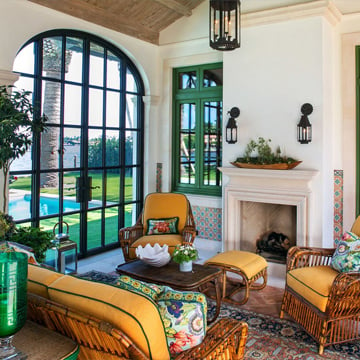 Create cool shades and block direct sunlight. As one of the single most common traditional tools, use your roller shutters, called persianas, to block the sun and heat in the morning and afternoons. Exterior shading, like awnings and pergolas, also blocks direct sunlight and helps create a cooling effect.
Create cool shades and block direct sunlight. As one of the single most common traditional tools, use your roller shutters, called persianas, to block the sun and heat in the morning and afternoons. Exterior shading, like awnings and pergolas, also blocks direct sunlight and helps create a cooling effect.
Take advantage of natural ventilation. Use cooler night air to remove heat from your home. You can open windows and doors to create cross-ventilation.
Air conditioning is one of the most widely used cooling solutions in Spanish houses. The split and multi-split units are especially popular as they are easy to install and inexpensive. On the other hand, ducted A/C systems are more common in high-end new builds and renovated apartments.
Then, what is the best air conditioner for Spanish homes? It all depends on what you’re looking for.
A single-split unit cools one room, while a multi-split system connects several indoor units to a single outside compressor. Meanwhile, ducted systems offer a more discreet look, as the air is distributed through diffusers and installed during construction.
You can also choose air conditioning in Spain based on energy efficiency, smart details like motion sensors, and noise level.
Ceiling fans are also a popular alternative. Many Spaniards use ceiling fans and portable fans as they are cheap, energy-efficient, and feel more natural. Though for hot days, they may be less effective than air conditioners.
Best Ways to Heat a Home in Spain
With cold winters and snowy weather approaching, explore different Spanish home heating options.
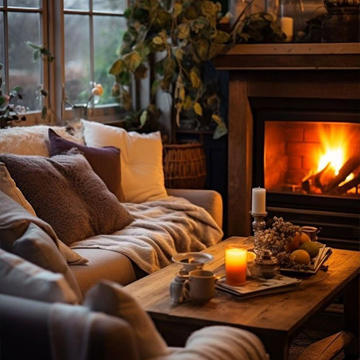 Heat Pumps: Heat pumps in Spain homes have become increasingly popular due to their efficiency and eco-friendliness. They draw heat from the air, or ground and water, and transfer it inside for heating. Many of the models are also reversible, which makes them ideal for staying cool in summer. Heat pumps in Spain cost several thousand euros upfront, though they stand out as a long-term investment since running costs are economical.
Heat Pumps: Heat pumps in Spain homes have become increasingly popular due to their efficiency and eco-friendliness. They draw heat from the air, or ground and water, and transfer it inside for heating. Many of the models are also reversible, which makes them ideal for staying cool in summer. Heat pumps in Spain cost several thousand euros upfront, though they stand out as a long-term investment since running costs are economical.
Gas Central Heating: By far the most common central heating system in Spain. These systems heat water and pump it through radiators or into an underfloor system. They can also provide year-round hot water for a household. Natural gas heating is a popular choice for its cost-to-comfort balance. However, when deciding between gas vs electric heating in Spain, consider that gas requires existing infrastructure. Some homeowners choose electric alternatives like heat pumps and radiators due to changing supply and prices.
Electric Radiators: In areas where gas or water systems aren’t available, these electric home heaters in Spain are very common, especially in smaller or older apartments. They are often the best heating for old Spanish houses that lack central heating. They convert electrical energy into heat, available in oil-filled or dry-panel models. While they are easy and cheap to install, winter heating costs can be high, particularly when used heavily.
Pellet Stoves and Biomass: They are bioenergy systems using wood pellets, chips, and agricultural waste like olive pits. A stand-alone pellet stove provides a more small-scale heating while biomass boilers fuel heat water, circulating through radiators or underfloor heating. They are sustainable but usually used in homes with storage spaces for pellets. For property owners looking for rural charm and energy-efficient heating in Spain, they offer sustainability and low running costs. They are often the cheapest ways to heat your home in Spain in the long run.
Energy Efficiency and Sustainable Solutions in Spain
 Energy prices, climate change, and eco-consciousness create a demand for efficient and sustainable solutions when it comes to climate control in Spanish homes. The Spanish government’s renewable energy goals and the European Union’s legal framework shape available options for homeowners.
Energy prices, climate change, and eco-consciousness create a demand for efficient and sustainable solutions when it comes to climate control in Spanish homes. The Spanish government’s renewable energy goals and the European Union’s legal framework shape available options for homeowners.
Insulation First
Thermal insulation is the main and most effective solution when it comes to energy efficiency. It is also the cheapest solution for how to reduce cooling costs in Spain, as well as heating. Upgrading insulation at roofs and walls, as well as double glazing and draught-proofing, can save up to 50% in bills.
Solar Panels in Sunny Spain
Making the most of Spain’s sun with solar panels is an effective and sustainable solution. You can use solar heating solutions in Spain, like solar-thermal or solar-generated electricity for air conditioning.
Smart Thermostats
Smart thermostat systems in Spain have learning functions that help control your home’s temperature automatically. They feature scheduling, zoning control, open window detection, and remote use. Based on your daily schedule, room occupancy, and temperature sensors, they control the heating and cooling systems, avoiding unnecessary energy use.
Government Incentives and Grants
Spain offers tax deductions and grants for certain energy-efficiency improvements like insulation, heat pumps, and solar panels in homes. Moreover, certain regions provide additional financial support for installing energy-efficient and renewable energy systems in Spain homes. Certified installations and energy efficiency works qualify for these incentives and grants at the regional or nationwide level.
While there are both popular and alternative options, heating and cooling for expat homeowners in Spain has no perfect answer. It all depends on your property, where you are, and your personal preferences and budget. Regardless of which system you choose, insulation should be a priority.
Consider both summers and winters, and remember you don't have to stick to a single solution. Many Spanish residents combine solutions for a balance of cost and comfort.


